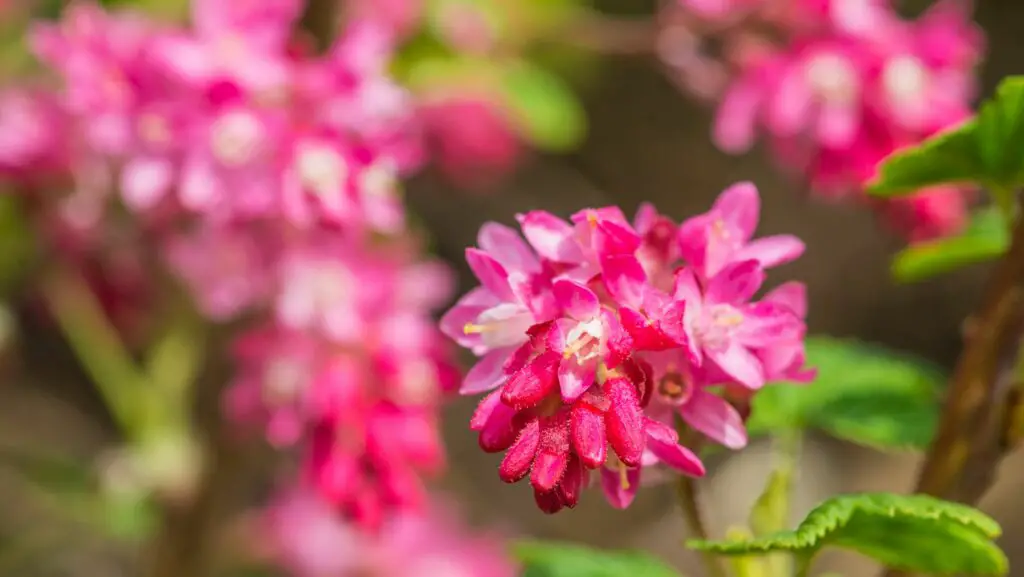
Shrubs for seaside gardens are rare in offering beautiful, lustrous, decorative foliage. The flowers of the escallonia are discreet but numerous and follow one another from June until the end of the Indian summer.
In this article, I have gathered for you all the information about the escallonia plant, its main characteristics, and what you need to know to plant and grow it.
Characteristics of the escallonia
| Scientific name | Escallonia spp. |
| Family | Saxifragaceae |
| Origin | South America |
| Foliage | Evergreen |
| Flowering | June-August |
| Rusticity | -5°C to -8°C (-41°F to -46°F) |
| Exposure | Sun or light shade |
| Soil | Slightly acidic and well-drained |
The escallonia is a shrub from 1,50 to 3 m height according to varieties, with small toothed, fleshy and shiny leaves, of a beautiful frank green. The flowers are small, grouped in terminal clusters, of more or less intense pink color, red, or more rarely white.
The growth is fast.
How to grow an escallonia plant
Plant in normal to slightly acidic, light and warm soil.
Place the shrub in a sunny, warm and sheltered place because the escallonia freezes easily. Moreover, it is a species to be recommended for seaside gardens.
Prune to maintain the density of the vegetation. In September, cut off the end of the stems that have bloomed, and in March, reduce the old branches by two thirds, above a new ramitication.
Plant and care for an escallonia hedge
At planting, between November and March, prune the branches to 30 cm from the ground. In June, cut back the branches by 20 to 30 cm. In the second year, cut half the length of the most vigorous stems in February-March, and prune all the branches back 20 cm in June.
Then, each year, in February-March, prune to increase the height of the hedge by about 10 cm, until it reaches the desired size. Then, maintain the hedge by cutting back in May-June and again in September any overhanging branches.
How to grow escallonia in a pot
Repot in a pot of 30 to 40 cm of diameter, in a slightly sandy compost (10% of river sand), enriched with heather soil (15%).
Water only when the substrate is quite dry, to avoid the accumulation of water.
Where to plant escallonia
It can be planted in a bed, in a low hedge, isolated or in a small group of a few feet, and in pots. When selecting a location for your Escallonia, make sure it is in an area that receives full sun to partial shade and has well-drained soil. When planting in a bed, make sure to space the plants at least two to three feet apart.
Compensate for its modest flowering by a tonic marriage with forsythia, lilacs or ceanothes.
Our selection

- Escallonia laevis ‘Gold Ellen‘, 1,20 m in all directions: its foliage remains golden throughout the year. At the end of the shoots, the flowers are intense pink and follow one another from June to September, even until October in the most clement areas.
- E. laevis ‘Gold Brian’, 1,50 m in all directions: its foliage is at first luminous green before taking a beautiful golden tint which turns to bronze at the end of the season. Its flowers are bright red.
- ‘Donard Radiance‘, 1.50 m high and 1 m wide, is fast growing. It blooms dark pink in June-July.
- ‘Pride of Donard‘: bright red flowers from June to August.
- E. rubra ‘Macrantha’: bright pink flowers from June to August.
- ‘Langleyensis‘: flexible habit; carmine pink blooms.
- ‘C.F. Ball‘, 2,50 m in all directions, is very vigorous, and recommended for hedges. Its flowers are crimson red.
In a nutshell
Escallonia shrubs come in a variety of colors, shapes, and sizes, making them perfect to use as hedges, screens, or accent plants. Escallonia shrubs are relatively hardy and can tolerate poor soil conditions and salt spray. However, they need protection from heavy winds and harsh winters. With the right care, these shrubs will thrive in your garden for years to come!

Hi!
I am the guy behind Theyardable.com. I grew up on a homestead and I am here to share the knowledge I have and things I learn while living in the countryside.
